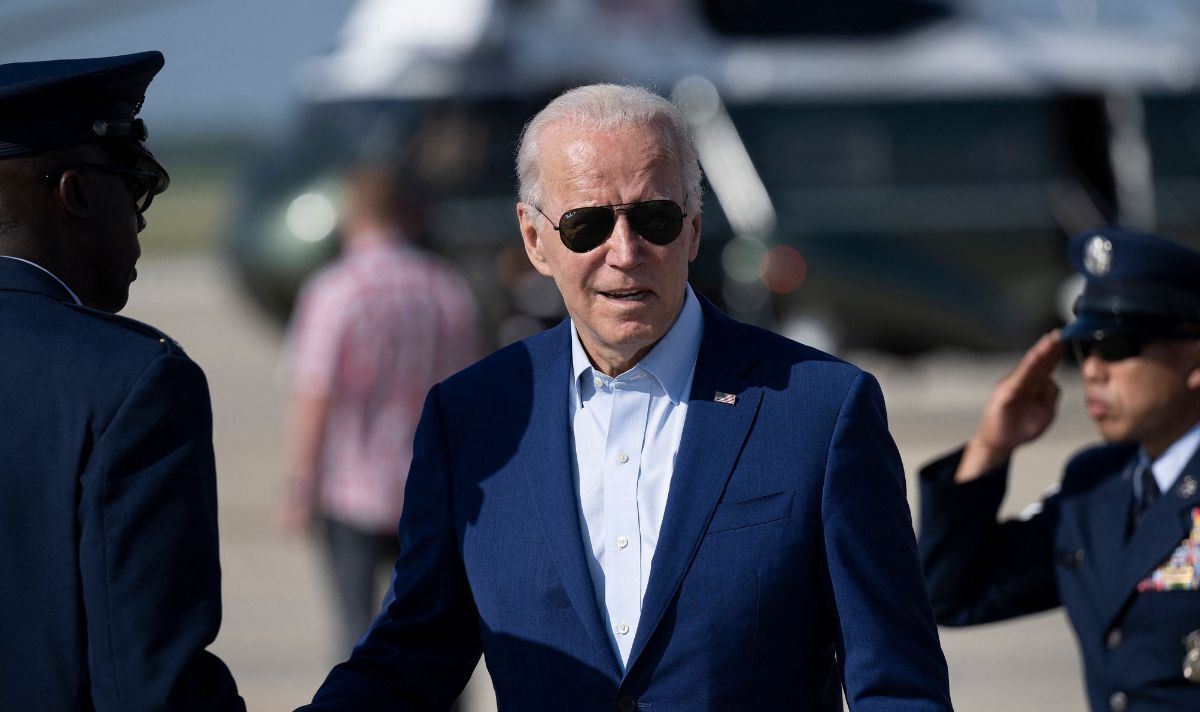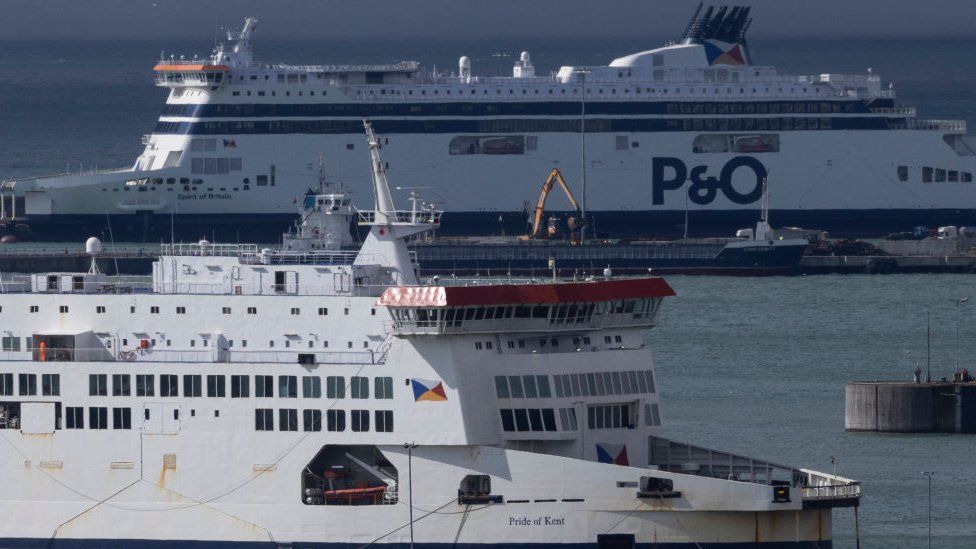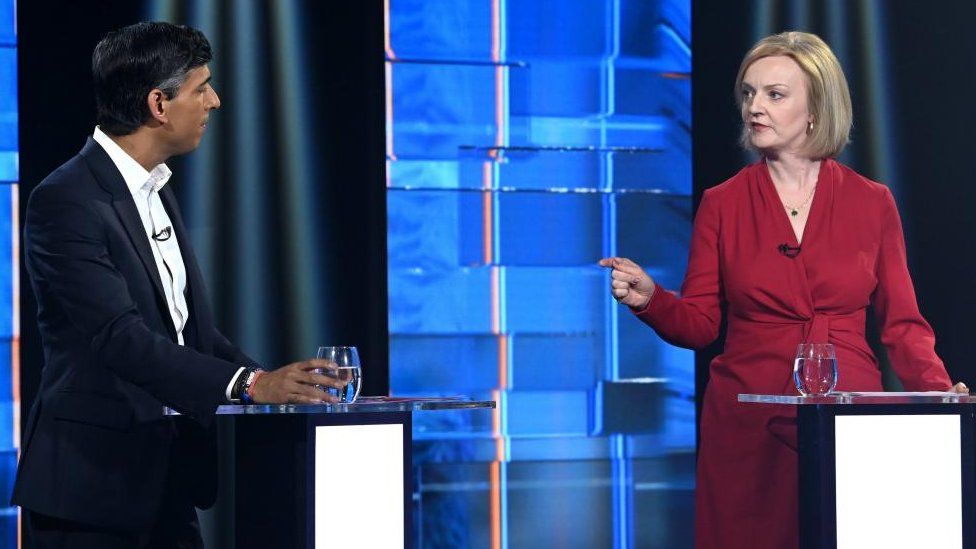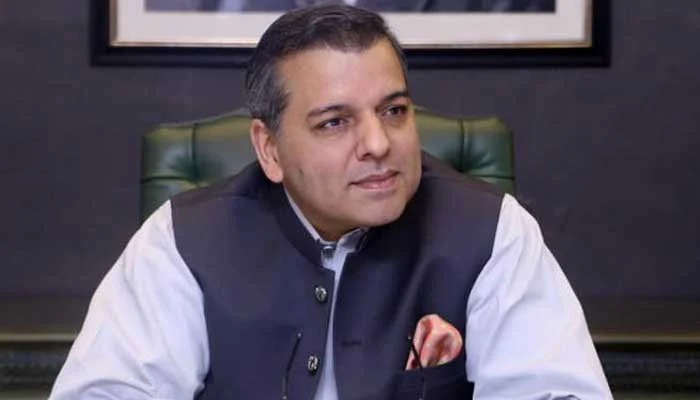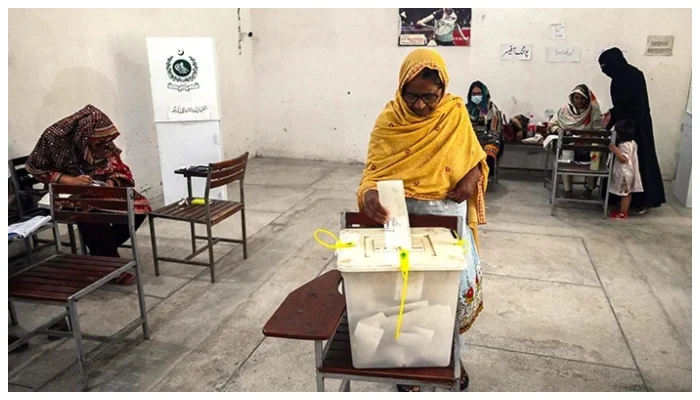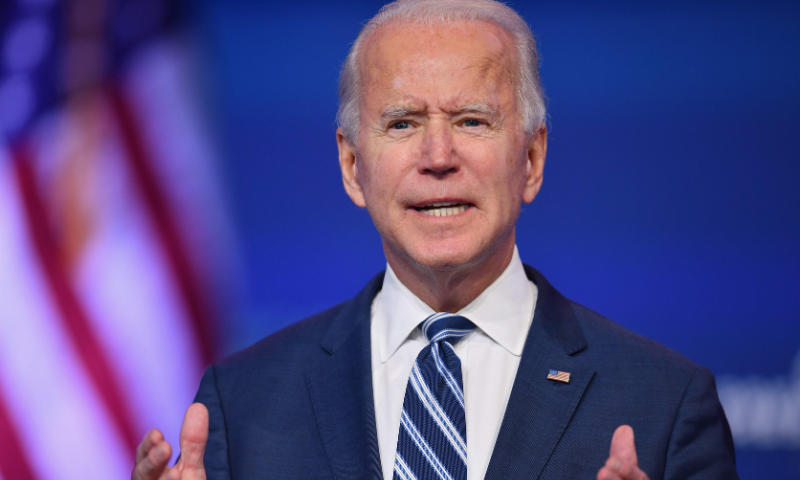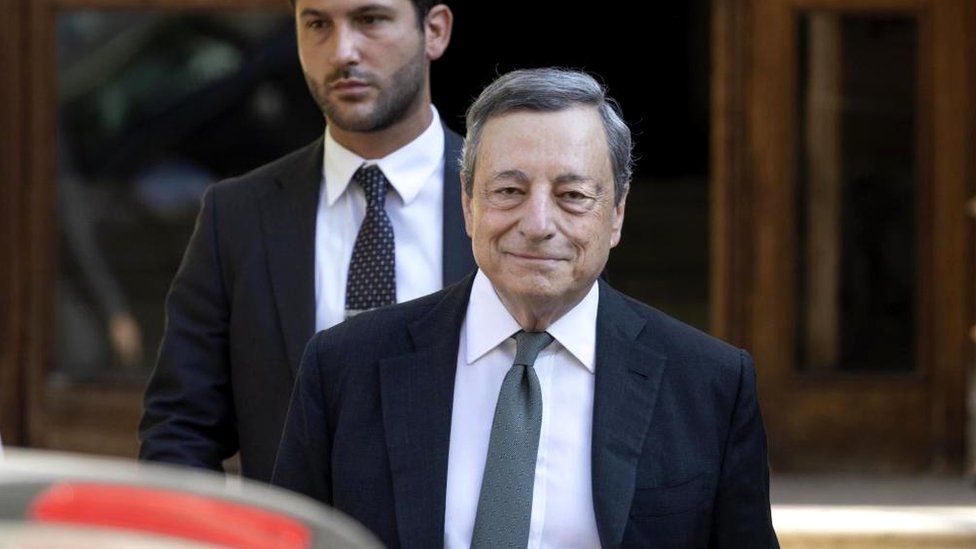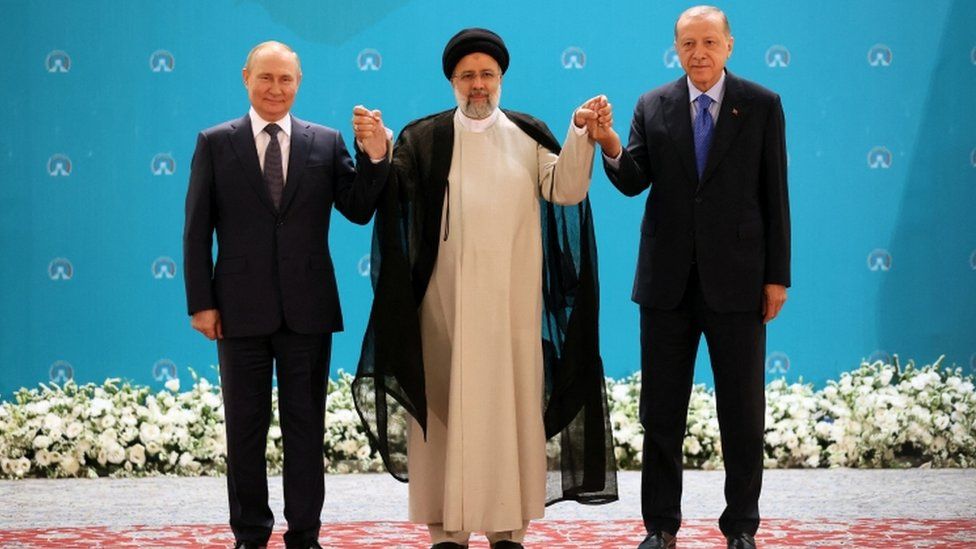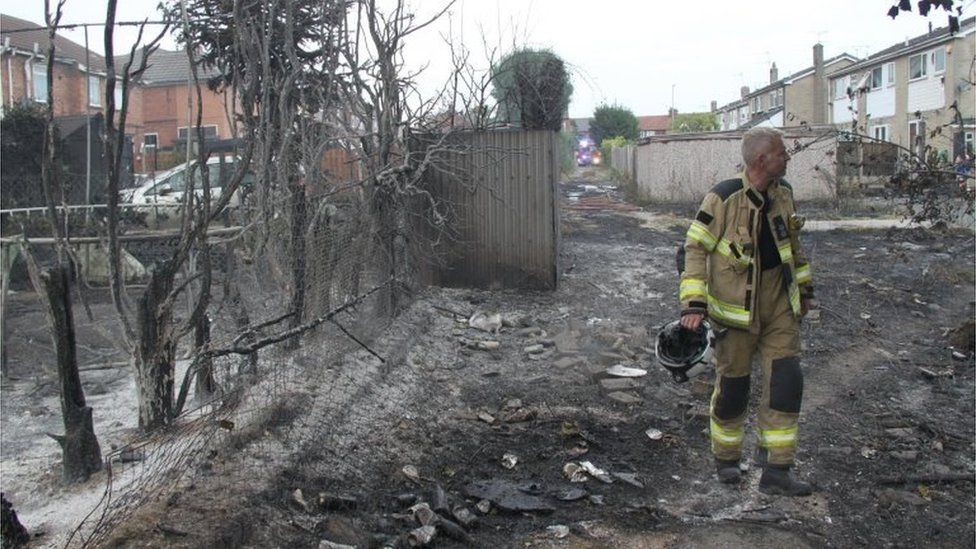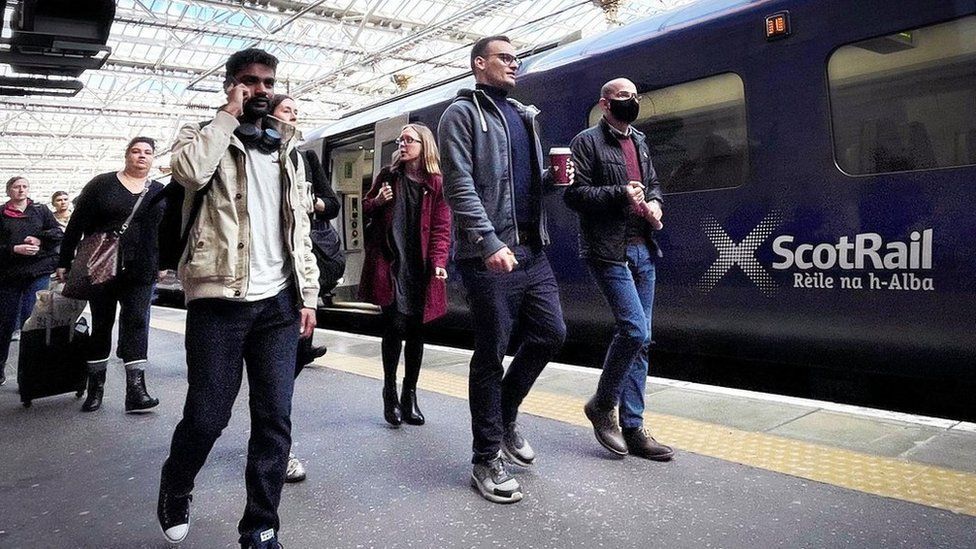But he stopped short of formally declaring a climate emergency, which would grant him further powers.
Mr Biden spoke in Massachusetts as a heatwave brings extreme weather to Europe and North America.
Tens of millions of people in the US, across more than two dozen states, are living under heat warnings this week.
“Climate change is literally an existential threat to our nation and to the world,” the president said in Wednesday’s speech, which was delivered outside a former coal-fired power plant in the town of Somerset. “The health of our citizens and our communities is… at stake. So we have to act.”
He said the funding would go to expanding flood control, shoring up utilities, retrofitting buildings, and helping families pay for heating and cooling costs.
The money comes from an existing Federal Emergency Management Agency budget and will be prioritised for disadvantaged communities, said the White House.
It includes $385m to help states fund air conditioning units in homes and community cooling centres.
The administration also plans to provide additional support for offshore wind and energy development in the Gulf of Mexico, and enforce new workplace standards to help protect workers from extreme weather.
Watch: This graphic shows how global temperatures are changing
While Mr Biden said that he will treat extreme climate conditions as “an emergency”, he stopped short of formally declaring a federal emergency.
The president has been under mounting pressure from fellow Democrats and environmental groups to do so after West Virginia Senator Joe Manchin – a conservative Democrat – last week said that he would not support legislation aimed at addressing climate change, dealing a significant blow to Mr Biden’s agenda. Mr Manchin raised concerns about inflation.
The president said on Wednesday that since Congress “is not acting as it should”, he plans to announce additional executive actions in the coming weeks.
“Our children and grandchildren are counting on us,” he said. “If we don’t keep [climate change] below 1.5C, we lose it all. We don’t get to turn it around.”
President Biden entered office promising to restore US credibility on climate action and overturn the “rollbacks” of President Trump’s environmental policy.
On his first day, he signed an executive order for the US to rejoin the Paris Climate Accords. In April last year he pledged to slash US greenhouse gas emissions by at least 50% by 2030.
But the path to turn these promises into action has been anything but straightforward for Mr Biden. This latest round of executive orders demonstrates the troubles he has faced in getting climate policy through the normal routes.
Ahead of the Glasgow climate conference, Mr Biden promised the US would provide $11.4bn a year in climate finance by 2024 – to help developing countries tackle and prepare for climate change. But in March he managed to secure just $1bn of that from Congress – only a third more than the Trump-era spending.
Wednesday’s executive orders do demonstrate Mr Biden is determined in his efforts. But he is perhaps also wary of pushing too far in using this type of presidential powers.
Just last month the Environmental Protection Agency lost some of its power to reduce greenhouse gas emissions in a landmark ruling by the US Supreme Court – following a case bought by 19 coal-producing states worried about job losses.
It is clear the battle lines have been drawn in the US on climate action – and time will tell how far Biden will get in his presidency in delivering his ambitions.


